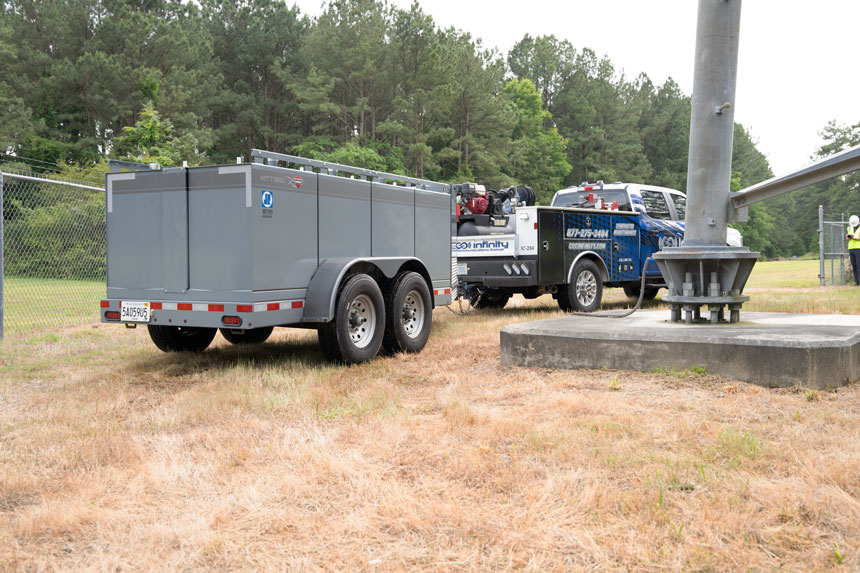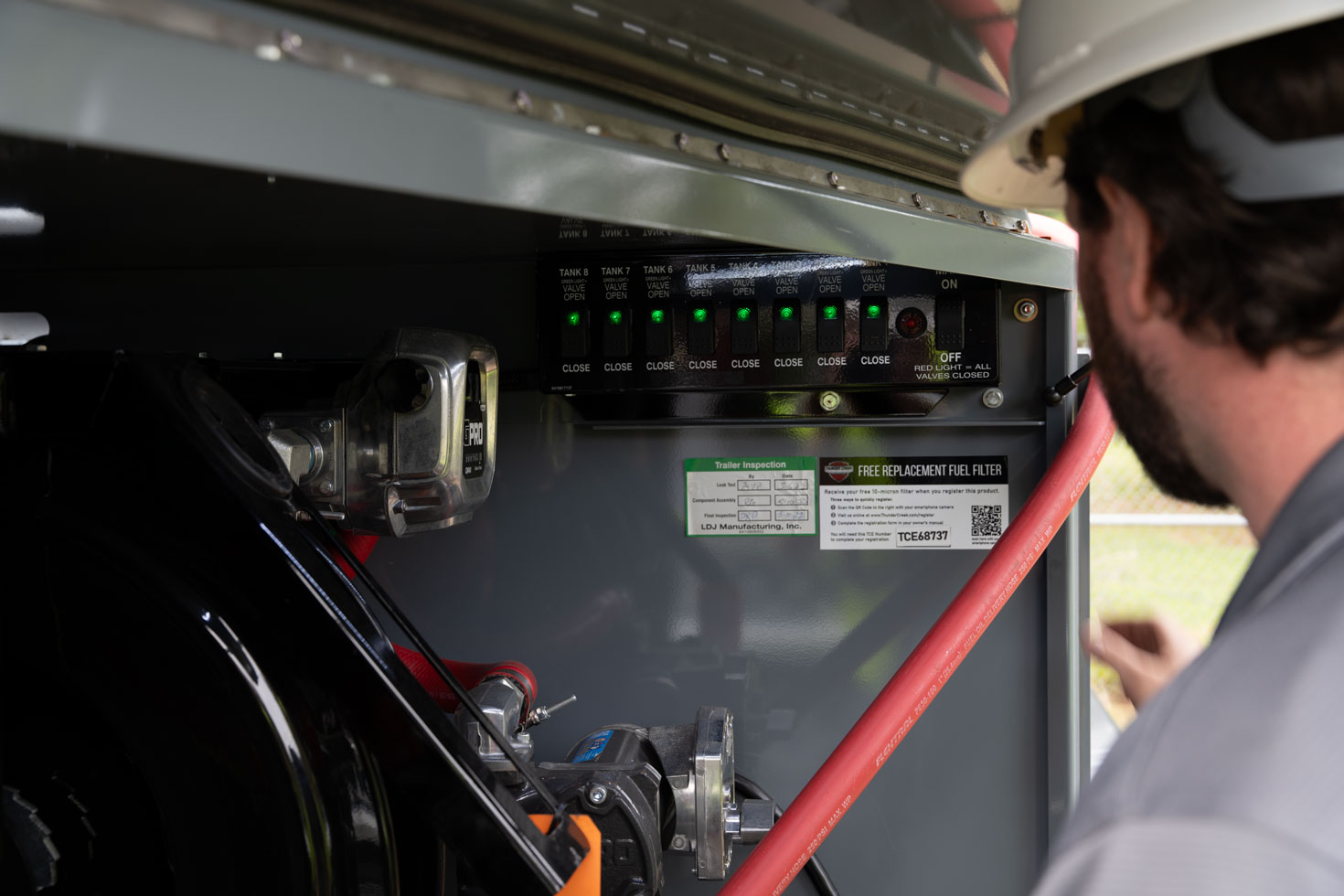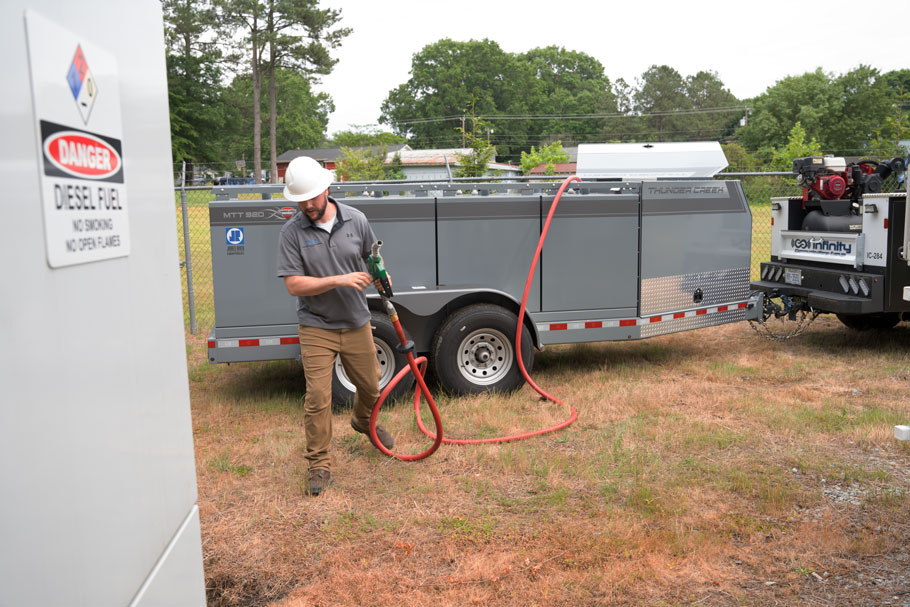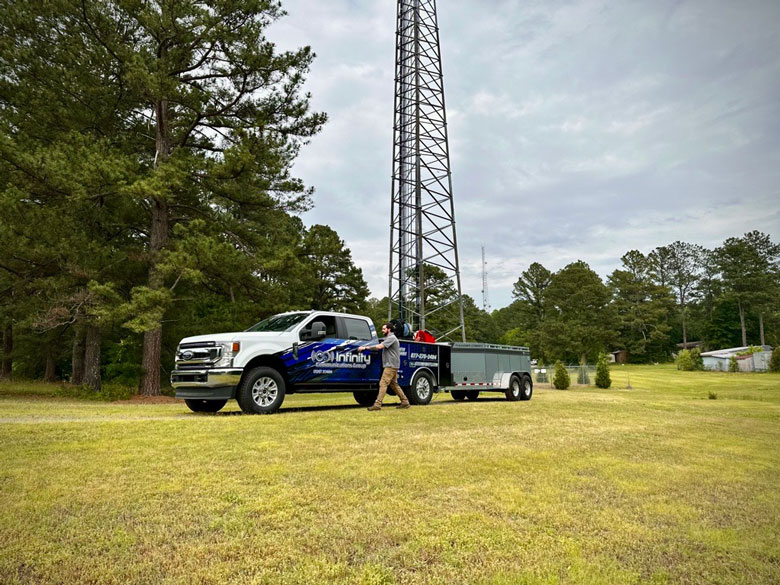Improved Disaster Responsiveness Through More Agile Fuel Delivery Systems
September 2023
Infinity Communications Group has been a provider of repair and maintenance services for major wireless carriers since they began operations in 2012. With facilities positioned across the United States, they can respond rapidly to any event that interferes with customer connectivity — this includes the ability to fuel backup power sources.
The organization is highly analytical in its response activities — relying on countless streams of real-time data to ensure the most effective deployment of resources. They have applied the same analytical mindset to their preparation work and how they prepare in the weeks and months ahead of disasters — from hurricanes and blizzards to wildfires.

This focus on intelligent fleet building and deployment led Infinity Communications Group to start utilizing Thunder Creek Multi-Tank Trailers (MTTs) to improve response and increase efficiencies for generator refueling and maintenance in disaster recovery situations.
“There are a lot of things that can happen with loss of commercial power,” says Megan Norriss, director of business operations and finance, Infinity Communications Group. “Mainly, when there’s a disaster or system power failure, there is nothing powering communications and cell towers… This can include emergency generators that will only operate on reserve fuel for so long. We are the ones coming in during these situations. Especially in disaster situations like wildfires, major hurricanes, and even the public safety power shutoffs in California, there needs to be a source of power for emergency responders and cleanup efforts.”
The challenge in providing fuel for all critical backup and support applications lies in finding and hiring qualified/permitted drivers to haul bulk diesel fuel to each site. The solution to that problem presented itself in the form of a trailer that allowed the company to haul bulk fuels without requiring the driver to have a HAZMAT endorsement or a CDL.
“We met the Thunder Creek team at the National Hurricane Conference last year,” says Norriss “Specifically, we needed to be able to haul fuel and not have the CDL or HAZMAT certifications.”
Since the introduction of the Thunder Creek Multi-Tank Trailers, this has been the most commonly asked question: how can these trailers haul bulk diesel without the need for a HAZMAT endorsed driver?

Thunder Creek makes this possible by isolating diesel in eight, separate, 115-gallon, DOT-compliant tanks. The tanks are joined by a manifold to a common pump, creating complete isolation during transport and controlled dispensing of fuel at the jobsite. Each trailer is built to maintain a low profile and is configured to provide optimal balance and a smooth ride at highway speeds, as well as in the most rugged, off-highway conditions.
Each trailer can be outfitted with an optional utility box that can house additional tools including air compressors, greasing systems and more — as well as Thunder Creek’s exclusive 2-in-1 diesel exhaust fluid (DEF) storage and dispensing system.
A major benefit of Thunder Creek trailers lies in their ability for faster response times and accessibility to locations less accessible to larger trucks. The trailers also provide flexibility in terms of labor, cost, and overall maneuverability and agility compared to larger fuel trucks.
“If you have all your resources tied up in fewer, less agile vehicles, your initial response to fuel needs will be delayed,” says Norriss. “As you can imagine, this is critical in a disaster situation. The sooner we can move out, the sooner people start recovering power.

“In something larger scale, like Hurricane Ian for example, the disaster area can be very widespread. We had to stage in multiple areas. With the Thunder Creek Multi-Tank Trailers (MTTs), you can have more resources going in different directions at the same time. It’s ideal.”
The ability to mobilize and stage these assets in the region in advance of the disaster, such as in the case of a predictable hurricane path, further allows the organization to be even more responsive.
“The way we’ve come to handle hurricanes is to be organized before the storm makes landfall,” explains Norriss. “We stage just outside the area that’s going to be impacted. We’re either just outside the main landfall area or right in the middle of everything. Before the storm hits, we deploy with pre-fueled generators. We get our sites up and ready and then we wait for the hurricane. After it passes, there’s a bit of a pause as we wait for the ‘all clear’ (from a safety standpoint). Then, we head right back out to perform refuels and to make sure our sites haven’t been damaged and are up and meeting customers’ needs.”
Another major advantage in deploying multiple bulk diesel platforms independently, and bringing diesel into the region, is a reduced vulnerability to diesel shortages and competing with locals at the pumps to fill up.

“With those trailers as an agile and mobile fuel source, our people aren’t trying to fill up generators with an entire community trying to do the same thing,” says Norriss. “That’s a bottleneck we can’t afford to get trapped in. In an emergency, we need to keep fuel on the road and moving.
“It’s truly a win-win for both sides — our company and our customers. With increased efficiency and speed, you can meet the needs of customers much faster. We’ve seen these things go through all types of weather and terrain. Thunder Creek trailers make it much easier to get your fleet fueled and into the field. The faster your people are on the ground and moving, the better it is for everyone.”
Back